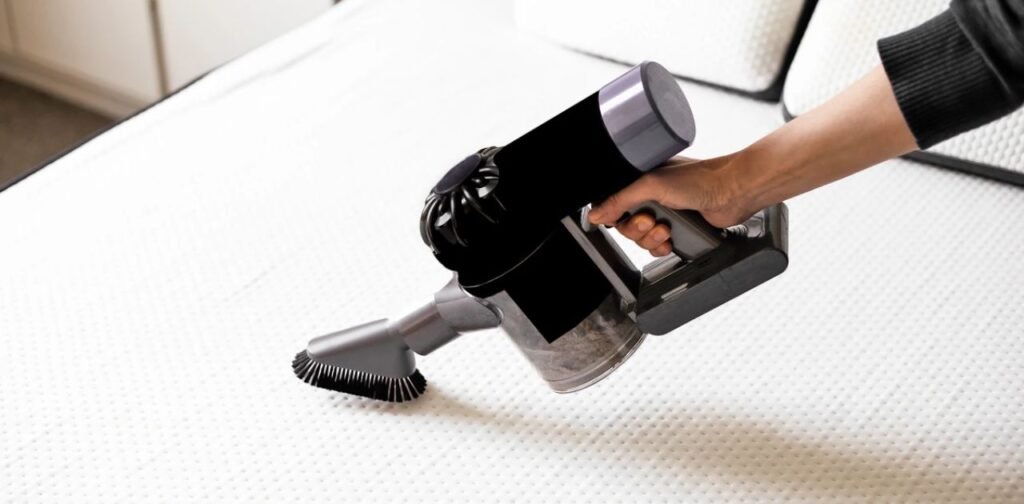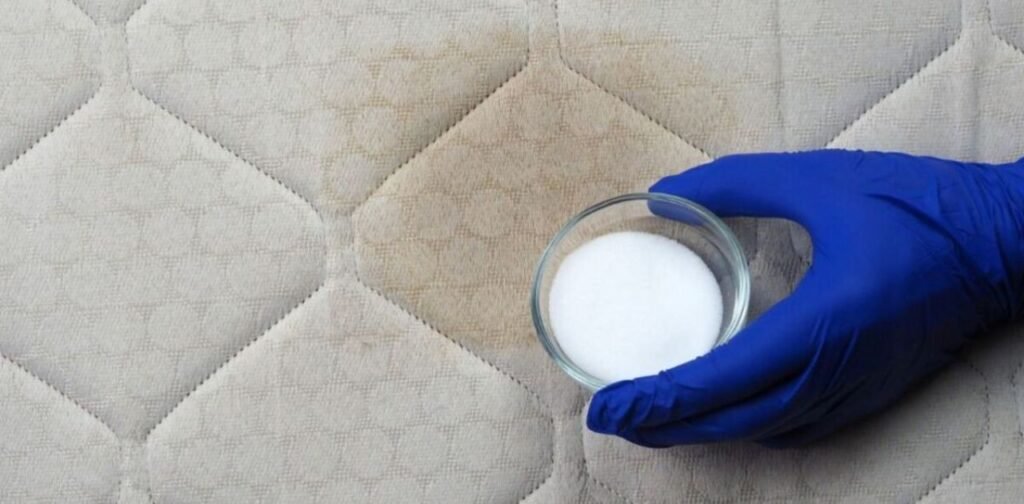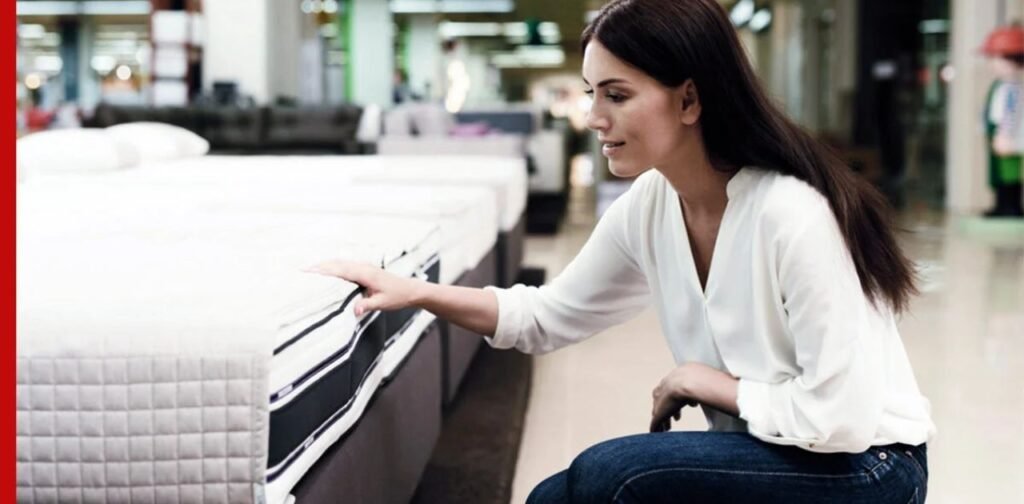Accidents happen to the best of us. Whether it’s a midnight mishap with the kids, an unplanned pet adventure, or an unfortunate spill, dealing with urine on a mattress is something most of us have faced. Knowing how to clean pee out of a mattress effectively is crucial for maintaining a clean, hygienic sleeping environment. Immediate action can prevent stains from setting in, odors from lingering, and bacteria from thriving. This comprehensive guide will walk you through each step, offering expert advice and tips to keep your mattress fresh and odor-free.
Why Immediate Action Matters
Urine, when left untreated, can cause significant damage to a mattress. The liquid quickly seeps into the mattress’s fibers and padding, creating a conducive environment for bacterial growth and mold. Furthermore, the uric acid in urine can cause unpleasant odors that become increasingly difficult to remove over time. Once a stain sets in, it can become a permanent mark on your mattress, and lingering odors can affect the quality of your sleep and the overall air quality in your bedroom.
The Science Behind Urine Stains and Odors
Urine is composed of water, urea, uric acid, electrolytes, and other waste products. When urine dries, the urea and uric acid break down into ammonia, which is responsible for the strong, pungent odor. Additionally, as the moisture evaporates, the remaining salts and crystals can bond with the mattress fibers, creating stains that are particularly stubborn to remove.
By acting quickly, you can prevent the ammonia from forming and reduce the risk of staining, making the cleaning process much easier and more effective.
What You Will Need
Before diving into the cleaning process, it’s important to gather all the necessary supplies. Having everything at your fingertips will not only make the process more efficient but also increase the likelihood of successfully removing the stain and odor.
Essential Cleaning Products
Here’s a list of essential items you’ll need:
- White Vinegar: White vinegar is a natural disinfectant that neutralizes odors and breaks down the uric acid in urine, making it easier to remove both the stain and the smell.
- Baking Soda: Known for its deodorizing properties, baking soda helps absorb moisture and neutralize odors. It also plays a crucial role in lifting stains.
- Hydrogen Peroxide (Optional): This powerful oxidizer is useful for treating deep or old stains. It can also help to sanitize the mattress, killing any bacteria that may be present.
- Dish Soap or Laundry Detergent: Mild soap helps to break down the organic components in urine, making it easier to clean.
- Spray Bottle: Essential for evenly applying the cleaning solutions to the stained area.
- Clean Towels or Paper Towels: These are necessary for blotting up the urine and absorbing excess cleaning solution during the process.
- Vacuum Cleaner with Upholstery Attachment: A vacuum is vital for removing the baking soda after it has done its job of absorbing moisture and odors.
Optional Supplies for Tough Odors
- Enzymatic Cleaner: Particularly useful for pet urine, enzymatic cleaners contain enzymes that break down the proteins in urine, effectively eliminating both stains and odors at a molecular level.
- Essential Oils: For those who prefer a fresh, natural scent, adding a few drops of essential oils (such as lavender or tea tree) can enhance the overall freshness of the mattress after cleaning.
Step 1: Remove the Bedding and Blot the Stain
The first step in Simple Dental Implants Lasting Tooth Solution is to remove any bedding that has come into contact with the urine. This includes sheets, pillowcases, mattress protectors, and any other fabric layers.
How to Properly Remove Bedding

Start by carefully stripping the bed. If the urine has soaked through to these layers, they will need to be washed immediately. Launder the affected bedding in the hottest water recommended for the fabric type. Adding a cup of white vinegar to the wash cycle can help neutralize odors. If the bedding is particularly stained or odorous, you may want to wash it twice.
Blot, Don’t Rub
Once the bedding is removed, it’s time to address the stain on the mattress itself. The key here is to blot, not rub. Rubbing can spread the urine around and push it deeper into the mattress fibers, making the stain more difficult to remove. Instead, take a clean towel or paper towel and gently blot the affected area. Press down firmly to absorb as much of the urine as possible. Continue blotting with fresh towels until the area is as dry as you can get it.
The Importance of Immediate Blotting
Blotting immediately after an accident occurs is crucial. The longer the urine remains on the mattress, the more time it has to seep into the deeper layers, where it becomes more challenging to remove. By blotting right away, you minimize the amount of liquid that penetrates the mattress, making the subsequent cleaning steps more effective.
Step 2: Apply a Vinegar Solution
Once you’ve blotted up as much urine as possible, the next step is to apply a vinegar solution to the stain. Vinegar is an excellent natural cleaner that works by breaking down the uric acid in urine and neutralizing odors.
Create the Vinegar Solution
To create the vinegar solution:
- Mix one part white vinegar with one part water in a spray bottle. This 50/50 mixture is strong enough to tackle the stain and odor without damaging the mattress.
Spray the Affected Area
Generously spray the vinegar solution over the stained area. Make sure to cover the entire area where the urine has soaked in. The solution should penetrate deep into the mattress to reach all the affected layers. Don’t be afraid to use a liberal amount—the goal is to thoroughly saturate the area so the vinegar can effectively break down the urine components.
Let it Sit
After applying the vinegar solution, it’s important to let it sit for at least 10-15 minutes. This allows the vinegar to work its magic, breaking down the uric acid and neutralizing odors. The waiting period is crucial, as it gives the solution time to fully penetrate the mattress and start loosening the urine stain.
Vinegar’s Natural Cleaning Properties
Vinegar’s effectiveness as a cleaning agent lies in its acetic acid content, which is capable of dissolving mineral deposits, dirt, grease, and grime. In the case of urine stains, the acetic acid in vinegar reacts with the alkaline components of urine, helping to neutralize the smell and break down the stain. This makes vinegar an excellent, eco-friendly choice for cleaning mattresses.
Step 3: Blot again and Sprinkle Baking Soda
After the vinegar solution has had time to work, the next step is to blot the area again and apply baking soda. This step helps to remove any remaining moisture and further neutralize odors.
Blotting the Vinegar Solution
Using a clean towel, blot the area once more to remove as much of the vinegar solution as possible. This step is important because it helps to prevent over-saturation, which could lead to mold or mildew if the mattress doesn’t dry properly. Blot until the area feels only slightly damp to the touch.
Baking Soda Application
Now it’s time to apply baking soda, which will help absorb any remaining moisture and odors. Here’s how to do it:
- Sprinkle baking soda generously over the damp area. Don’t be shy—use enough to cover the entire affected area with a thick layer.
The Science of Baking Soda

Baking soda (sodium bicarbonate) is a mild alkaline compound that not only helps to neutralize acidic odors but also works as a natural deodorizer by trapping unpleasant smells. It also has absorbent properties, making it ideal for drawing out moisture from the mattress, which is crucial in the drying process. Blogs of matters often recommend this method for effective cleaning.
Let the Baking Soda Sit
For optimal results, leave the baking soda on the mattress for several hours or overnight. The longer it sits, the more effective it will be at absorbing moisture and neutralizing odors. During this time, the baking soda will work to lift out the residual urine and vinegar solution, as well as any remaining odors.
Step 4: Vacuum the Mattress
Once the baking soda has had time to do its job, it’s time to remove it.
How to Properly Vacuum
Using a vacuum cleaner with an upholstery attachment, thoroughly vacuum the mattress to remove all the baking soda. Make sure to go over the area multiple times to ensure that all the baking soda is picked up. If any residue is left behind, it could attract moisture and lead to mold growth.
Inspect for Remaining Stains or Odors
After vacuuming, take a close look at the mattress. Check for any remaining stains or odors. If the area still smells or if there’s any discoloration, you may need to repeat the cleaning process or try an alternative treatment. For particularly stubborn stains, consider using a hydrogen peroxide solution or an enzymatic cleaner, as described in the next section.
The Importance of Thorough Vacuuming
Proper vacuuming is essential to ensure that no baking soda residue is left behind. Baking soda, if left on the mattress, can become abrasive over time, potentially damaging the fabric. Additionally, any residual baking soda can attract moisture, which could lead to mold or mildew growth, compromising the cleanliness and safety of your mattress.
Step 5: Dealing with Stubborn Stains and Odors
In some cases, you may find that even after following the steps above, the stain or odor persists. This is especially common with older or deeply set-in urine stains. Fortunately, there are additional methods you can try to remove these stubborn issues.
Hydrogen Peroxide and Baking Soda Paste
For tough stains that refuse to budge, a hydrogen peroxide and baking soda paste can be particularly effective:
- Create the Paste: Mix 1/2 cup of baking soda, 1/4 cup of hydrogen peroxide, and a few drops of dish soap to form a paste.
- Apply the Paste: Spread the paste over the stain using a cloth or sponge. Make sure to cover the entire stained area.
- Let it Sit: Allow the paste to sit on the stain for about 30 minutes. During this time, the hydrogen peroxide will work to break down the stain, while the baking soda helps to lift it from the mattress fibers.
- Blot and Vacuum: After 30 minutes, blot the area with a clean towel to remove the paste, then vacuum the mattress to remove any remaining residue.
Enzymatic Cleaners
For pet urine or particularly stubborn odors, an enzymatic cleaner can be a game-changer. These cleaners contain enzymes that break down the proteins in urine, effectively eliminating both the stain and the odor at a molecular level.
- How to Use: Spray the enzymatic cleaner on the affected area according to the product instructions. Typically, you’ll need to let it sit for a longer period (often 10-15 minutes) to allow the enzymes to fully break down the urine components.
- Repeat if Necessary: In some cases, multiple treatments may be required to completely remove the stain and odor.
When to Consider Professional Cleaning

If you’ve tried all of these methods and still can’t get rid of the stain or smell, it might be time to consider professional mattress cleaning. Professional cleaners have access to industrial-strength cleaning products and equipment that can penetrate deep into the mattress to remove even the most stubborn stains and odors. Additionally, they can provide treatments that prevent future mold and bacteria growth, ensuring your mattress remains clean and healthy.
The Risks of DIY Treatments
While DIY treatments are effective for most stains, they do carry some risks, particularly if not done correctly. For example, using too much water or failing to dry the mattress thoroughly can lead to mold growth. Harsh chemicals can damage the fabric or cause discoloration. If you’re unsure or dealing with a particularly expensive or delicate mattress, professional cleaning may be the safer option.





Your point of view caught my eye and was very interesting. Thanks. I have a question for you.
Thanks for sharing. I read many of your blog posts, cool, your blog is very good.
Thanks for sharing. I read many of your blog posts, cool, your blog is very good.